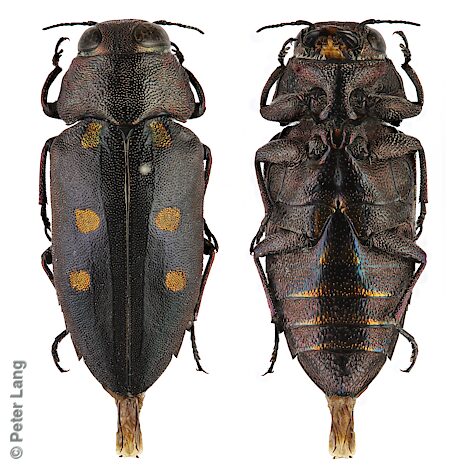
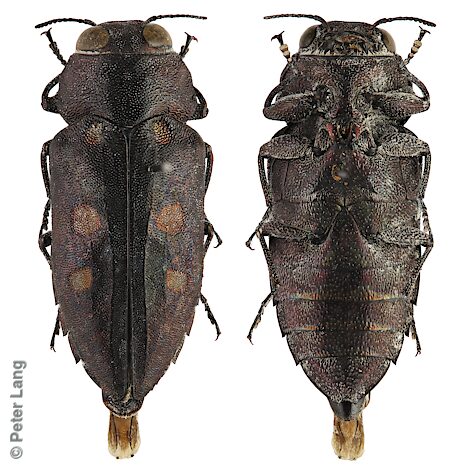
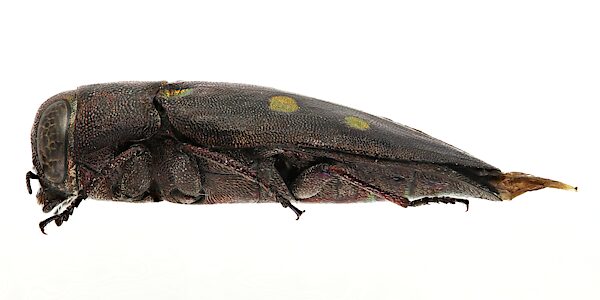

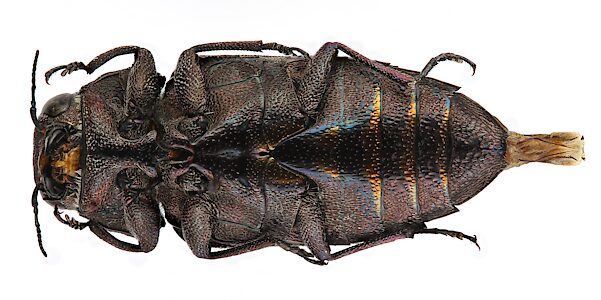
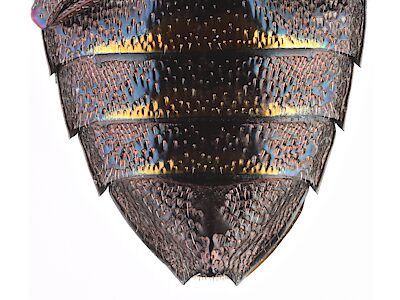
size¹:
×
5.9 mm






| female | ||||||
|---|---|---|---|---|---|---|
| L1 | 14.1 | 13.9 – 14.35 | n = 2 | |||
| L2 | 13.8 | n = 1 | ||||
| W | 5.8 | 5.8 – 5.9 | n = 2 | |||
| Legend | L1 | length from clypeus/frons to elytral apex (mean, range, sample size) |
| L2 | length from anterior of edge of eyes to elytral apex | |
| W | maximum width with elytra fully closed |
Resembles C. australasiae from WA in its broad overall shape and the pronotum being exceptionally wide near its base, but differs in its larger size, coarser puncturation, larger more conspicuous elytral foveae, and in the outline of the pronotum being more angular and less rounded. The relatively superficial and large elytral foveae, and the brightly coloured underside with abdominal ventrites banded dark violet and gold suggest that it is allied to C. mastersii (q.v.) and C. blackburni. Distinguished from C. saundersii with which it occurs by its broader body shape, much reduced elytral costae, larger more circular and more superficial elytral foveae, and the less sculptured upper frons. Can be distinguished from C. perroni by, inter alia, the much sparser, relatively inconspicuous hairs on the metepimeron and absence of a longer terminal tooth on each elytron.
A specimen of this entity in the SA Museum was collected (presumably live) in 1931-32 by A. Brumby at Oodnadatta. Othewise, to date, it is known only from dead salt lake specimens. Several are in good condition, and of nine collections, four have been determined as to sex and are female. Until identified males are obtained, it is uncertain whether the broad body shape and wide pronotum are sex-related features.
| Legend | P.J.Lang collection vouchered records | |
| other private collection or museum specimens, or sightings |
| ¹ Legend | regions | SA State Herbarium regions (map) EA: Eastern, EP: Eyre Peninsula, FR: Flinders Ranges, GT: Gairdner-Torrens, KI: Kangaroo Island, LE: Lake Eyre, MU: Murray, NL: Northern Lofty, NU: Nullarbor, NW: North-Western, SE: South-Eastern, SL: Southern Lofty, YP: Yorke Peninsula |
| size | The ellipse is the correct size when printed, indicative on a desktop screen, and likely to be wrong on a mobile device. |